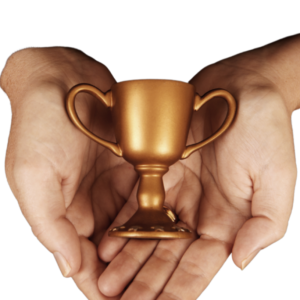Introduction
Groin pain in men is a common and limiting condition that can considerably impact everyday tasks and quality of life. Accurate diagnosis and efficient therapy depend on identifying the underlying causes of this discomfort. This study paper attempts to combine evidence from Western medicine and traditional Chinese medicine (TCM) literature to provide a comprehensive understanding of the causes of groin discomfort. By studying research-based results from Western Medicine and incorporating the unique principles of TCM, a holistic understanding of groin pain in men can be achieved, leading to improved management strategies and patient outcomes.
Causes of Groin Pain in Men: Western Medicine Perspective
Groin pain in men can arise from a variety of musculoskeletal, genitourinary, and other possible reasons. Accurate diagnosis and successful management of groin pain depend on an understanding of these factors. According to the model of Western medicine, the following groups constitute the main factors frequently linked to groin pain in men:
Musculoskeletal Causes:
Groin pain is significantly affected by musculoskeletal factors. Sports-related injuries such as inguinal hernias, muscular strains, and tendon injuries are common causes. In addition, conditions affecting the hip joint, such as osteoarthritis, labral tears, and hip impingement, can cause groin pain.[1]
Genitourinary Causes:
Men may experience groin pain due to a variety of genitourinary problems. The groin region may experience severe discomfort as a result of testicular disorders including testicular torsion, epididymitis, or orchitis. Another probable reason for groin pain is chronic prostatitis, which is characterized by prostate gland inflammation. It could be highly associated with compression from prostatic stasis (prostatic fluids, semen, and urine) in prostate ducts and acinus. Groin pain can also be a symptom of kidney stones, UTI, and other conditions.[2]
Other Potential Causes:
Groin pain may be a symptom of inguinal lymphadenopathy, which can be brought on by localized or systemic infections, cancers, or inflammatory diseases.[1] Radiating pain in the groin region can result from nerve entrapment syndromes such as ilioinguinal or genitofemoral neuralgia. Groin pain can also be caused by inflammatory disorders such as osteitis pubis or athletic pubalgia, which are frequently observed in athletes.[3]
To pinpoint the precise reason for groin pain in men, a thorough evaluation is necessary. Healthcare professionals can launch suitable diagnostic inquiries and create customized treatment plans to reduce discomfort and restore optimal function by being aware of these Western medicine-based reasons.
Causes of Groin Pain in Men: Traditional Chinese Medicine (TCM) Perspective
Based on the theories of Qi(Yang), and Blood(Yin), which could be mostly interpreted with “Stasis Theory,” Chinese Medicine provides a distinctive viewpoint on the reasons for groin pain in males.
In Chinese theory Qi is interpreted as Yang and Blood is interpreted as Yin. Although it is most likely an extract concept and hard to understand, we would hire the stasis theory to help us to interpret TCM concepts.
According to TCM, groin pain can develop as a result of internal organ dysfunction, channel blockages, Yin-Yang imbalances, and Qi and Blood circulation imbalances. The following material is based on TCM concepts, but it’s crucial to remember that these theories might not be well accepted in Western medicine yet and undergoing thorough research.[4]
Qi and Blood Coagulation:
It is suggested in Chinese medicine that blood and qi congestion may be the cause of groin pain. The regular flow of Qi and Blood can be disrupted by trauma, continuing illnesses, or lifestyle choices, which can lead to localized pain and suffering in the groin area.[4]
Imbalances in Internal Organs:
According to TCM, internal organ imbalances or disorders, such as those of the liver, kidney, or spleen, may contribute to groin pain. These imbalances, which may affect the flow of Qi and Blood, may cause pain and suffering.[5]
Blockage of Body Channels:
Chinese Medicine also describes the capillary system of the body, which comprises energy channels through which Qi flows. Obstacles or obstructions in these channels, such as those associated with the Liver or Kidney stones may cause groin pain. [6, 7]
Prostatic stasis (prostatic fluid, semen, urine) stagnated and accumulated inside the prostate ducts and acinus, and might compress nerves triggering pain in the groin area. Stasis is also considered the root cause of the chronic prostatitis/chronic pelvic pain syndromes (CP/CPPS) in Chinese Medicine.
When combining Western medicine and TCM ideas, it is essential that you consider these viewpoints with an open mind, take important information into account, and maintain transparency. More research is needed to examine and verify the perspectives of Chinese Medicine on male groin discomfort. [6]
Evidence-Based Treatment Approaches
Evidence-based methods are essential to attaining the best results for treating male groin pain. According to scientific studies, the following therapy techniques are successful at treating groin pain:
Physical Therapy and Rehabilitation:
Groin pain management is significantly aided by physical therapy. The use of focused exercises and manual therapy methods to enhance muscle strength, flexibility, and biomechanics is supported by evidence. It is also possible to use therapeutic modalities like ultrasound, electrical stimulation, and hot/cold therapy.[8]
Conventional Medications:
Sometimes doctors will recommend drugs to treat groin discomfort. Non-steroidal anti-inflammatory medications (NSAIDs) can aid in reducing inflammation and pain. Other drugs including antibiotics, muscle relaxants, or neuropathic pain relievers may be recommended depending on the underlying reason.[9] However, it has shown a limitation in treating CP/CPPS-related groin pain symptoms.[10] For instance, alpha-blockers have shown no significant effect on pain symptoms.[11]
TCM (Phytotherapy):
People have built a wide awareness of botanical treatment. Canadian Urology Association has recommended that phytotherapy could be considered as first-line treatment for men with chronic prostatitis/chronic pelvic pain syndrome CP/CPPS. Quercetin, the pollen extract, and Cernilton are highly recommended, which might have shown increased effectiveness and satisfaction rate.[12]
Although the single-ingredient formula has shown advantages in treating CP/CPPS-related symptoms, multi-targeted phytotherapy might be more effective.
One advantage of Chinese Herbal Medicine (CHMs) therapeutics is the Chinese Herbal Formula, that is, multiple components often play a synergistic role greater than that of the individual drug. [13] It could help discharge prostate stasis, enhance immune symptoms and recover the tissue’s function.
Injections:
In some circumstances, injections might deliver focused relief. In particular structures, such as the hip joint or inguinal region, corticosteroid injections may be utilized to minimize swelling and pain. Several groin pain problems have shown promise when treated with platelet-rich plasma (PRP) injections, which include growth factors to aid in healing. [14]
Surgical Interventions:
Surgical techniques may be considered in situations where conservative therapy has not sufficiently relieved the symptoms. The corrections of hernias, hip arthroscopy, or operations to address particular anatomical defects causing groin pain are a few examples. To fully assess the potential risks and benefits of surgical options, a healthcare expert should be consulted.
It is significant to remember that different treatment modalities may be used depending on the precise cause and degree of groin pain. It is frequently advantageous to use a multidisciplinary, personalized strategy that involves collaboration between primary care doctors, physical therapists, and specialists. [14]
Controversies and Areas of Ongoing Research
Men’s groin pain continues to be a topic of discussion and current investigation in the scientific community. The following are some of the current debates and research directions:
Diagnostic Challenges:
Due to the complications and overlap of possible underlying causes, determining the precise diagnosis of groin discomfort can be difficult. Research on the distinction between the musculoskeletal, genitourinary, and neuropathic causes of groin discomfort is still underway.
Surgical vs. Non-surgical Approaches:
The best way to treat some groin pain conditions, such as sports pubalgia or inguinal hernias, is still up for debate. Investigations into the efficacy and long-term results of surgical versus non-surgical therapies are ongoing. [15]
Emerging Treatment Modalities:
For their potential to encourage healing and tissue regeneration in disorders causing groin discomfort, new treatment approaches such as stem cell therapy are being investigated. To ascertain their effectiveness and safety, more research is necessary.
Traditional Chinese Medicine Integrate with Conventional Treatment
Traditional Chinese Medicine known as phytotherapy has gained wide recognition. Studies have provided evidence of the effectiveness of TCM phytotherapy on a variety of symptoms including pain symptoms, such as groin pain, lower back pain, and pain in the perineum. Non-severe side effects have been reported. [16]
Integration of Phytotherapy with conventional treatment has been examined, which has provided positive results. Together, TCM and clinical pharmacology could achieve more than any of them could do separately. [17]
Psychosocial Factors:
A growing body of research is examining how psychosocial factors, such as psychological distress and pain catastrophizing, affect groin pain and how to treat it. There is a continuous study into how physical and psychological aspects interact as well as how to create comprehensive, bio-psychosocial treatment plans.
These debates and active study fields demonstrate the changeable nature of male groin discomfort and the demand for ongoing research. Healthcare professionals can improve diagnostic procedures and therapeutic strategies and eventually improve patient outcomes by filling in these knowledge gaps. [18]
In summary, groin discomfort in males is a complicated problem that requires a holistic strategy that fuses the perspectives of Western Medicine and Chinese Medicine. Groin pain can be effectively managed with evidence-based treatment methods such as physical therapy, medicines, injections, and surgery. Research is still being done on the difficulties of diagnosis, ideal treatment plans, new medicines, and the impact of psychological factors. While admitting disagreements, combining the perspectives of Western and Chinese Medicine can help us better grasp the subject and deliver all-encompassing care. Healthcare workers can enhance the diagnosis, care, and general well-being of people with groin discomfort by encouraging teamwork and implementing evidence-based practices.
-
- Roh, H.C., et al., Warming induces significant reprogramming of beige, but not brown, adipocyte cellular identity. Cell metabolism, 2018. 27(5): p. 1121-1137. e5.
-
- Wadhera, P., An introduction to acinar pressures in BPH and prostate cancer. Nature Reviews Urology, 2013. 10(6): p. 358-366.
-
- Thorborg, K., et al., Clinical examination, diagnostic imaging, and testing of athletes with groin pain: an evidence-based approach to effective management. journal of orthopaedic & sports physical therapy, 2018. 48(4): p. 239-249.
-
- Xiao, L.-J. and R. Tao, Traditional Chinese medicine (TCM) therapy. Substance and Non-substance Addiction, 2017: p. 261-280.
-
- Yao, C.-l., et al., Traditional Chinese medicine (TCM) as a source of new anticancer drugs. Natural product reports, 2021. 38(9): p. 1618-1633.
-
- Ghods, R., N. Sayfouri, and M.H. Ayati, Anatomical features of the interscapular area where wet cupping therapy is done and its possible relation to acupuncture meridians. Journal of acupuncture and meridian studies, 2016. 9(6): p. 290-296.
-
- Hoffman, A., M.M. Braun, and M. Khayat, Kidney Disease: Kidney Stones. FP essentials, 2021. 509: p. 33-38.
-
- King, E., et al., Athletic groin pain: a systematic review and meta-analysis of surgical versus physical therapy rehabilitation outcomes. British journal of sports medicine, 2015. 49(22): p. 1447-1451.
-
- Bin Nasser, A., et al., Incidence of groin pain after metal-on-metal hip resurfacing. Clinical Orthopaedics and Related Research®, 2010. 468: p. 392-399.
-
- van der Worp, H., et al., Discontinuation of alpha-blocker therapy in men with lower urinary tract symptoms: a systematic review and meta-analysis. BMJ open, 2019. 9(11): p. e030405.
-
- Yang, G., et al., The Effect of α‐Adrenergic Antagonists in Chronic Prostatitis/Chronic Pelvic Pain Syndrome: A Meta‐Analysis of Randomized Controlled Trials. Journal of andrology, 2006. 27(6): p. 847-852.
-
- Kiely, E., E. Kursh, and J. Ulchaker, Office Urology: The Clinician’s Guide. British Journal of Surgery, 2001. 88(8): p. 1135-1136.
-
- Wang, Z., et al., Efficacy and safety of Chinese herbal medicine for chronic prostatitis associated with damp-heat and blood-stasis syndromes: a meta-analysis and literature review. Patient preference and adherence, 2016: p. 1889-1902.
-
- Schilders, E., et al., Adductor-related groin pain in competitive athletes: role of adductor enthesis, magnetic resonance imaging, and entheseal pubic cleft injections. JBJS, 2007. 89(10): p. 2173-2178.
-
- Kim, D.S., et al., Usefulness of a myofascial trigger point injection for groin pain in patients with chronic prostatitis/chronic pelvic pain syndrome: a pilot study. Archives of Physical Medicine and Rehabilitation, 2013. 94(5): p. 930-936.
-
- Maxion-Bergemann, S., et al., Traditional Chinese medicine (phytotherapy): Health Technology Assessment report–selected aspects. Complementary Medicine Research, 2006. 13(2): p. 30-41.
-
- Marshall, A.C., Traditional Chinese medicine and clinical pharmacology. 2020: Springer.
-
- Ashby, E., Chronic obscure groin pain is commonly caused by enthesopathy:‘tennis elbow’of the groin. British journal of surgery, 1994. 81(11): p. 1632-1634.




